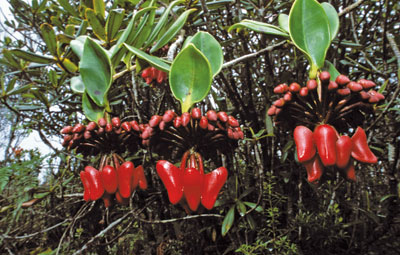From the NY Times, one of the more interesting science reports I’ve read lately: there exist a number of species of plants that thrive in metal-rich environments, soaking up the heavy elements that can then be harvested and used for industrial purposes (traditional farming has a lot of downsides, but perhaps not as many as mining operations?).
Slicing open one of these trees or running the leaves of its bush cousin through a peanut press produces a sap that oozes a neon blue-green. This “juice” is actually one-quarter nickel, far more concentrated than the ore feeding the world’s nickel smelters.
This quote is evocative of the “speculative fiction” sound this makes:
The language of literature on phytomining, or agromining, hints of a future when plant and machine live together: bio-ore, metal farm, metal crops. “Smelting plants” sounds about as incongruous as carving oxygen.

